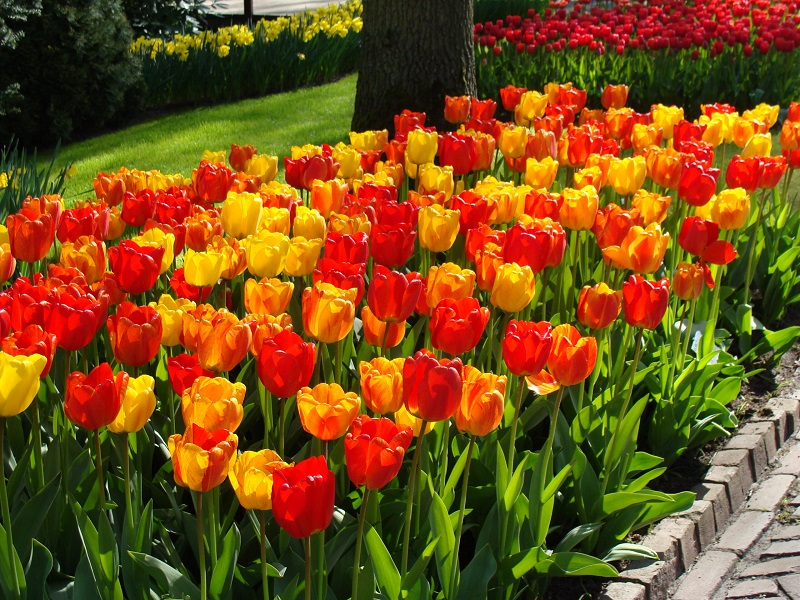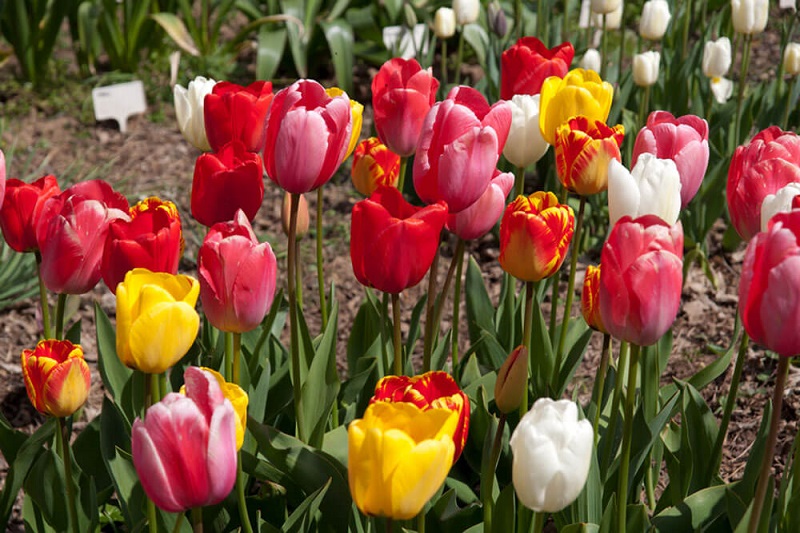Darwin Hybrid Tulips are celebrated for their stunning blooms, vibrant colors, and robust growth. Originating from the Netherlands and named after Charles Darwin, these tulips have become a favorite among gardeners and horticulturists for their striking appearance and reliability. This comprehensive guide explores the characteristics, growing conditions, and care required for Darwin Hybrid Tulips, offering valuable insights for both seasoned gardeners and newcomers. Whether you’re looking to enhance your garden or simply appreciate the beauty of these flowers, this article will provide you with everything you need to know.
Historical Background
Origin and Development
Darwin Hybrid Tulips were first introduced in the 1950s as a result of extensive breeding programs aimed at combining the best traits of various tulip species. Named in honor of Charles Darwin, these tulips were developed to provide larger, more vibrant flowers with stronger stems, making them ideal for both garden beds and floral displays.
Breeding History
The hybridization process involved crossing Darwin Tulips with other species to enhance their size, color, and resilience. This careful selection and breeding have resulted in the robust and visually striking tulips we know today.

Botanical Classification
Family and Genus
Darwin Hybrid Tulips belong to the family Liliaceae and the genus Tulipa. They are a subset of the tulip family known for their exceptional qualities, which distinguish them from other tulip varieties.
Hybrids
As hybrids, Darwin Tulips inherit a blend of characteristics from their parent species, resulting in flowers that exhibit enhanced features such as larger blooms and stronger stems.
Characteristics of Darwin Hybrid Tulips
Flower Structure
Darwin Hybrid Tulips are known for their large, robust flowers with a classic tulip shape. The petals are smooth and velvety, adding to their elegant appearance. They come in a wide range of vibrant colors including red, pink, yellow, and orange, each adding a burst of color to any garden or floral arrangement.
Plant Size and Growth
Darwin Hybrid Tulips typically grow to a height of about 12 to 18 inches (30 to 45 cm). They feature strong stems that can support their large blooms, making them a stable choice for garden beds and floral displays. The foliage is usually green, lance-shaped, and grows from the base of the plant.
Growing Conditions for Darwin Hybrid Tulips
Climate and Temperature
Darwin Hybrid Tulips thrive in temperate climates with a cold winter period. They require a temperature range between 35°F to 65°F (1.7°C to 18°C) for optimal growth. The bulbs need a period of dormancy in cold temperatures to ensure successful blooming in the spring.
Soil Requirements
These tulips prefer well-draining soil, ideally sandy loam or loamy soil. The soil should have a pH level between 6.0 and 7.0. Good drainage is essential to prevent waterlogging and bulb rot.
Light Requirements
Darwin Hybrid Tulips require full to partial sunlight, with at least 4 to 6 hours of sunlight daily. In hot climates, some afternoon shade can help protect the bulbs from excessive heat.
Watering
Regular watering is important for Darwin Hybrid Tulips, but the soil should be allowed to dry slightly between waterings. Over-watering can lead to bulb rot, so ensure proper drainage to keep the bulbs healthy.
Planting Darwin Hybrid Tulips
Timing
The best time to plant Darwin Hybrid Tulips is in the fall, approximately 6 to 8 weeks before the first frost. This allows the bulbs to establish roots before the winter season.
Planting Procedure
- Depth: Plant bulbs 6 to 8 inches (15 to 20 cm) deep.
- Spacing: Space bulbs 4 to 6 inches (10 to 15 cm) apart.
- Soil Preparation: Improve soil fertility and drainage by mixing in compost or well-rotted manure.
Care and Maintenance
Fertilization
Use a balanced fertilizer, such as a 10-10-10 blend, at planting time and again in early spring. Follow the manufacturer’s instructions to avoid over-fertilizing.

Pruning and Deadheading
Remove spent flowers (deadheading) to encourage the plant to focus energy on bulb development rather than seed production. Allow the foliage to die back naturally to nourish the bulb for the next growing season.
Pest and Disease Management
- Pests: Common pests include aphids and spider mites. Use insecticidal soap or neem oil to treat infestations.
- Diseases: Watch for fungal diseases like gray mold and root rot. Ensure proper spacing and drainage to prevent these issues.
Harvesting and Storing
Harvesting
Cut tulips when the buds are still tight but have begun to show color. Place them in water immediately to extend their vase life.
Storing Bulbs
After flowering, let the foliage die back naturally. Dig up the bulbs and store them in a cool, dry place until you are ready to replant in the fall.
Propagation
Methods
- Division: Divide bulbs when they have multiplied, typically every 3 to 4 years.
- Seed Propagation: Less common but possible; growing tulips from seeds is more time-consuming and less predictable.
Timing and Conditions
Propagate during the growing season for the best results. Ensure favorable conditions for rooting and bulb development.
Notable Varieties and Hybrids
Some popular Darwin Hybrid Tulips include:
- ‘Apeldoorn’: Known for its vibrant red color.
- ‘Daydream’: Features a striking orange-yellow hue.
- ‘Golden Apeldoorn’: Renowned for its bright yellow blooms.
Cultural and Aesthetic Significance
Symbolism
Darwin Hybrid Tulips symbolize beauty, strength, and renewal. They are often associated with springtime and new beginnings.
Use in Floral Arrangements
Due to their large blooms and rich colors, Darwin Hybrid Tulips are popular in floral arrangements for weddings, events, and seasonal decorations.
Conclusion
Darwin Hybrid Tulips are a testament to the beauty and versatility of tulip varieties. With their vibrant colors, robust growth, and elegant blooms, they offer both aesthetic appeal and practical benefits for gardeners. By understanding their growing conditions, care requirements, and unique characteristics, you can successfully cultivate these stunning flowers and enjoy their beauty each spring. Embrace the charm of Darwin Hybrid Tulips and enhance your garden with these remarkable blooms.
